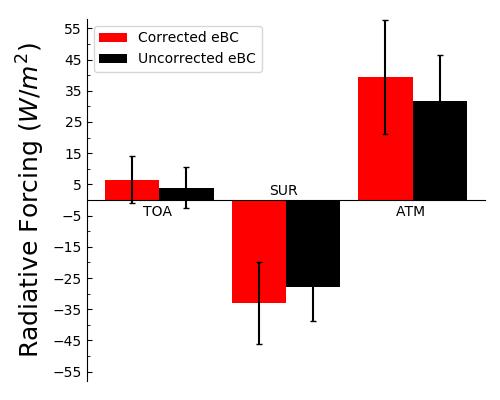A New Study Evaluating Mass Absorption Cross-section Will Help Understand Warming Over the Himalayas Better
Accurate estimation of black carbon (BC), the second most important global warming pollutant after CO2, will now be possible using optical instruments in the Himalayan region. Thanks to the mass absorption cross-section (MAC) specific to the Himalayan region that scientists have estimated.
Scientists at the Aryabhatta Research Institute of Observational Sciences (ARIES) an autonomous institute under the Department of Science & Technology (DST), Govt. of India, in collaboration with scientists from University of Delhi, IIT Kanpur and Space Physics Laboratory, ISRO have made extensive observations of black carbon and elemental carbon and estimated monthly and wavelength dependent values of MAC over the central Himalayan region for the first time.
The researchers have derived the intra-annual multi-wavelength values of MAC – an essential parameter which is used for converting the light attenuation records to BC mass concentrations. In a study published in Asia-Pacific Journal of Atmospheric Sciences led by Priyanka Srivastava, pursuing her PhD thesis work at ARIES Nainital under the supervision of Dr. Manish Naja, the authors have found that the annual mean value of MAC (5.03 ± 0.03 m2 g−1 at 880nm) is significantly lower than the constant value (16.6 m2 g−1 at 880nm) used earlier. These lower values are a result of aged pollution emissions received at this otherwise clean site. The study also reveals that these estimated MAC values show significant seasonal variation, spanning over a range of 3.7 to 6.6 m2 g−1 at 880nm. It is found that these changes are caused by the seasonal variability of biomass burning, air mass variation and meteorological parameters.


Figure 1: (Left) Variations in monthly average equivalent black carbon (eBC) concentrations during the 2014–2017 period using the presently derived site and month specific MAC (corrected eBC) and standard MAC of 16.6 m2 g−1 (uncorrected eBC). Error bars in the plot represent one sigma standard variation. (Right) Enhancement in radiative forcing.
These higher resolution multi-wavelength and long-term observations used in calculating MAC will help improve the performance of numerical weather prediction and climate models in estimating the warming effects caused by BC emissions. It has been shown to reduce the underestimation of the atmospheric radiative forcing by up to 24 %. Further, owing to these MAC values, the already available data set series can be corrected to ascertain the trend in BC emissions for more than a decade. Additionally, the precise knowledge on BC at various wavelengths will help in source apportionment studies done to constrain the sources of BC emissions. This can thus serve as important information to form the mitigation policies.
Publication link: https://doi.org/10.1007/s13143-021-00241-6
For more details: Dr. Manish Naja (manish[at]aries.res.in)
This story is also available on DST website.

